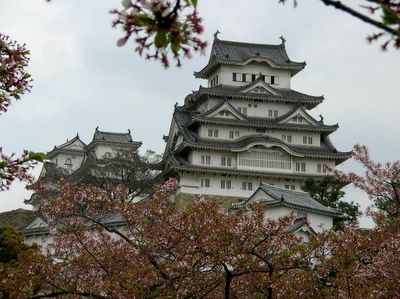World Heritage Site - Himeji Castle

Himeiji is best known for its majestic castle, located in the city center and considered the best surviving feudal castle in Japan. It is also known as Shirasagi-jo (White Heron Castle) because of the resemblance of its white-plastered walls to the bird's silhouette.
It is about 370 years since Himeji Castle was constructed in its present shape. This is the only excellent castle which architecturally represents Japanese culture and, at the same time, has handed down its original design at the time of construction.

It is one of the oldest surviving structures from medieval Japan, and has been designated a UNESCO World Heritage Site and a Japanese National Cultural Treasure. Along with Matsumoto Castle and Kumamoto Castle, it is one of Japan's "Three Famous Castles", and is the most visited castle in Japan.
Situated on a 45m-high hill, the building was started in the mid-14th century, expanded by warlord Toyotomi Hideyoshi and completed in 1609 by daimyo (baron) Ikeda Terumasa, a supporter of shogun Tokugawa Ieyasu.

It was second only to Osaka Castle in size. It is made up of a 5-story donjon (main keep), three 3-story donjon and a series of interconnecting passageways. The main compound is surrounded by three rings of outer compounds.
The grounds have been designated as a Historic Site and the castle itself as a National Treasure. The Shirasagi-jo is a classic example of Japanese castle design, with an almost impenetrable defense system. But it was built at the beginning of the peaceful Edo Period (1600~1868) and was never actually attacked. It was used as an administrative center and symbol of power.

The Kurosawa Akira film Ran includes scenes where a castle is under attack and gives some idea of the inside of one of these fortresses. Enkyoji temple at the summit of Mt. Shosha on the outskirts of the city attracts visitors and has a good view of the city below.

tags : Himeji Castle World Heritage Site Japanese National Cultural Treasure



0 Comments:
Post a Comment
<< Home